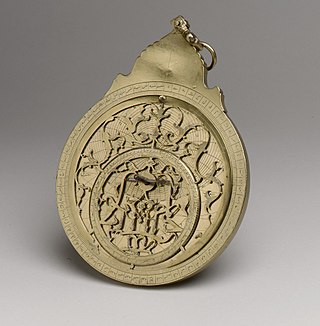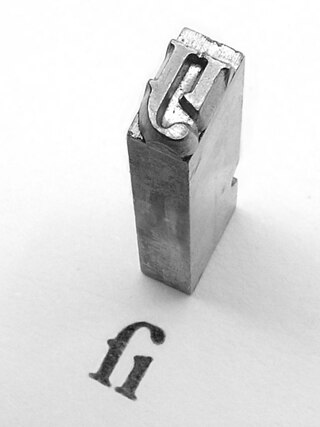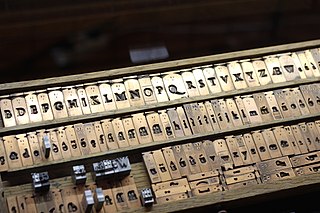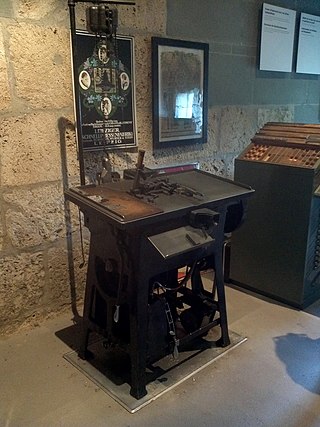Related Research Articles

Brass is an alloy of copper (Cu) and zinc (Zn), in proportions which can be varied to achieve different colours and mechanical, electrical, and chemical properties, but copper typically has the larger proportion. In use since prehistoric times, it is a substitutional alloy: atoms of the two constituents may replace each other within the same crystal structure.

A metal is a material that, when freshly prepared, polished, or fractured, shows a lustrous appearance, and conducts electricity and heat relatively well. Metals are typically ductile and malleable. These properties are the result of the metallic bond between the atoms or molecules of the metal.

Solder is a fusible metal alloy used to create a permanent bond between metal workpieces. Solder is melted in order to wet the parts of the joint, where it adheres to and connects the pieces after cooling. Metals or alloys suitable for use as solder should have a lower melting point than the pieces to be joined. The solder should also be resistant to oxidative and corrosive effects that would degrade the joint over time. Solder used in making electrical connections also needs to have favorable electrical characteristics.

Palatino is the name of an old-style serif typeface designed by Hermann Zapf, initially released in 1949 by the Stempel foundry and later by other companies, most notably the Mergenthaler Linotype Company.
Pewter is a malleable metal alloy consisting of tin (85–99%), antimony, copper (2%), bismuth, and sometimes silver. Copper and antimony act as hardeners, but lead may be used in lower grades of pewter, imparting a bluish tint. Pewter has a low melting point, around 170–230 °C (338–446 °F), depending on the exact mixture of metals. The word pewter is probably a variation of the word spelter, a term for zinc alloys.
The Mergenthaler Linotype Company is a corporation founded in the United States in 1886 to market the Linotype machine, a system to cast metal type in lines (linecaster) invented by Ottmar Mergenthaler. It became the world's leading manufacturer of book and newspaper typesetting equipment; outside North America, its only serious challenger for book typesetting was the Anglo-American Monotype Corporation. Starting in 1960, the Mergenthaler Linotype Company became a major supplier of phototypesetting equipment which included laser typesetters, typefonts, scanners, typesetting computers. In 1987, the US-based Mergenthaler Linotype Company became part of the German Linotype-Hell AG; in the US the company name changed to Linotype Co. In 1996, the German Linotype-Hell AG was taken over by the German printing machine company Heidelberger Druckmaschinen AG. A separate business, Linotype Library GmbH was established to manage the digital assets. In 2005, Linotype Library GmbH shortened its name to Linotype GmbH, and in 2007, Linotype GmbH was acquired by Monotype Imaging Holdings, Inc., the parent of Monotype Imaging, Inc. and others.

In printing, type metal refers to the metal alloys used in traditional typefounding and hot metal typesetting. Historically, type metal was an alloy of lead, tin and antimony in different proportions depending on the application, be it individual character mechanical casting for hand setting, mechanical line casting or individual character mechanical typesetting and stereo plate casting. The proportions used are in the range: lead 50‒86%, antimony 11‒30% and tin 3‒20%. Antimony and tin are added to lead for durability while reducing the difference between the coefficients of expansion of the matrix and the alloy. Apart from durability, the general requirements for type-metal are that it should produce a true and sharp cast, and retain correct dimensions and form after cooling down. It should also be easy to cast, at reasonable low melting temperature, iron should not dissolve in the molten metal, and mould and nozzles should stay clean and easy to maintain. Today, Monotype machines can utilize a wide range of different alloys. Mechanical linecasting equipment uses alloys that are close to eutectic.

The Linotype machine is a "line casting" machine used in printing, manufactured and sold by the former Mergenthaler Linotype Company and related companies. It was a hot metal typesetting system that cast lines of metal type for individual uses. Linotype became one of the mainstay methods to set type, especially small-size body text, for newspapers, magazines, and posters from the late 19th century to the 1970s and 1980s, when it was largely replaced by phototypesetting and digital typesetting. The name of the machine comes from the fact that it produces an entire line of metal type at once, hence a line-o'-type. It was a significant improvement over the previous industry standard of manual, letter-by-letter typesetting using a composing stick and shallow subdivided trays, called "cases".

Die casting is a metal casting process that is characterized by forcing molten metal under high pressure into a mold cavity. The mold cavity is created using two hardened tool steel dies which have been machined into shape and work similarly to an injection mold during the process. Most die castings are made from non-ferrous metals, specifically zinc, copper, aluminium, magnesium, lead, pewter, and tin-based alloys. Depending on the type of metal being cast, a hot- or cold-chamber machine is used.

In the manufacture of metal type used in letterpress printing, a matrix is the mould used to cast a letter, known as a sort. Matrices for printing types were made of copper.

In printing and typography, hot metal typesetting is a technology for typesetting text in letterpress printing. This method injects molten type metal into a mold that has the shape of one or more glyphs. The resulting sorts or slugs are later used to press ink onto paper. Normally the typecasting machine would be controlled by a keyboard or by a paper tape.

A Ludlow Typograph is a hot metal typesetting system used in letterpress printing. The device casts bars, or slugs of type, out of type metal primarily consisting of lead. These slugs are used for the actual printing, and then are melted down and recycled on the spot. It was used to print large-type material such as newspaper headlines or posters.

Type casting is a technique for casting the individual letters known as sorts used in hot metal typesetting by pouring molten metal into brass moulds called matrices.

Sabon is an old-style serif typeface designed by the German-born typographer and designer Jan Tschichold (1902–1974) in the period 1964–1967. It was released jointly by the Linotype, Monotype, and Stempel type foundries in 1967. The design of the roman is based on types by Claude Garamond, particularly a specimen printed by the Frankfurt printer Konrad Berner. Berner had married the widow of a fellow printer Jacques Sabon, the source of the face's name, who had bought some of Garamond's type after his death. The italics are based on types designed by a contemporary of Garamond's, Robert Granjon. It is effectively a Garamond revival, though a different name was chosen as many other modern typefaces already carry this name.
Linotype may refer to:

Bismuth is a chemical element with the symbol Bi and atomic number 83. It is a post-transition metal and one of the pnictogens, with chemical properties resembling its lighter group 15 siblings arsenic and antimony. Elemental bismuth occurs naturally, and its sulfide and oxide forms are important commercial ores. The free element is 86% as dense as lead. It is a brittle metal with a silvery-white color when freshly produced. Surface oxidation generally gives samples of the metal a somewhat rosy cast. Further oxidation under heat can give bismuth a vividly iridescent appearance due to thin-film interference. Bismuth is both the most diamagnetic element and one of the least thermally conductive metals known.

A cast bullet is made by allowing molten metal to solidify in a mold. Most cast bullets are made of lead alloyed with tin and antimony; but zinc alloys have been used when lead is scarce, and may be used again in response to concerns about lead toxicity. Most commercial bullet manufacturers use swaging in preference to casting, but bullet casting remains popular with handloaders.
Sustained load cracking, or SLC, is a metallurgical phenomenon that occasionally develops in pressure vessels and structural components under stress for sustained periods of time.